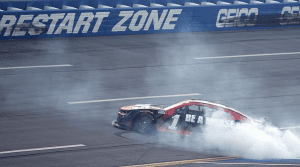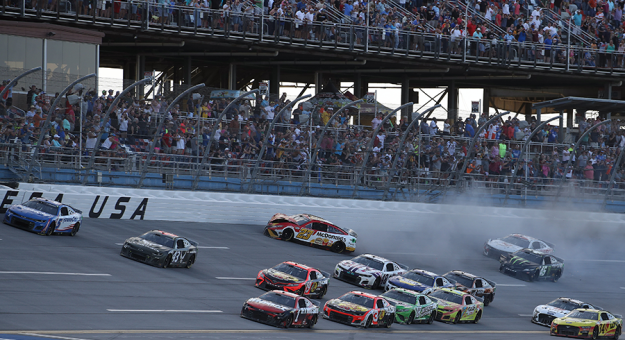MOORESVILLE, N.C. — Part of the intent of introducing the Next Gen race car to the NASCAR Cup Series was to make all of the cars the same and to limit the number of cars that teams needed to build to be competitive.
Thus, many found it very interesting to learn that the car Ross Chastain drove to victory Sunday at Talladega (Ala.) Superspeedway was the same car that he won with a month earlier on the road course at Circuit of The Americas in Austin, Texas.
“It makes it so special that Jim France and the NASCAR family, the France family, their vision for this car that you can win a race on a road course and in a month you can bring a car back and win at Talladega,” Chastain said. “That hasn’t happened since the ’60s. I don’t know, farther back. I have no idea. They would have different cars.

“It’s wild. That’s more what it means to me, that this car is capable of that,” Chastain added. “Change the geometry, the suspension, shim the body a little bit, go race. Put different tune in the motor for a superspeedway, adjust your rear diffuser, adjust everything and the same car can come race. That’s just wild.”
Winning crew chief Phil Surgen elaborated on the changeover process.
“It really comes down to just the whole Next Gen platform. All the cars are the same, have the same range of adjustments and same group of parts,” Surgen explained. “All the cars right now are essentially universal. We took that car after it was done at COTA, cleaned it up, set it up a little bit differently to come here. There’s no reason it can’t race at a different type of track, an oval, next time, a downforce oval.”
Surgen said it would be difficult to use the same car every week.
“It would be really difficult to turn it around every week,” he said. “Every third or fourth week, with the cleanup and the prep time that goes into it, you could use it every third or fourth week pretty easily.”
• Michael McDowell finished eighth on Sunday, but the Front Row Motorsports Ford driver says he has some things to learn regarding racing the Next Gen car at Talladega.
“It is just a different style of racing even more so here than it was at Daytona with this NextGen car,” McDowell explained. “I have a lot to study and go back and learn and figure out how to make the moves. I am proud of everyone. Coming out of here with a top 10 is a great day. I wish we could have had a shot at it but we just weren’t there at the end.”
• Joey Logano was among the many drivers eliminated from Sunday’s race in one of several typical superspeedway crashes. Logano spoke volumes when he said, “It stinks. It’s Talladega. I don’t know. Some people love it — I can’t say I do.”
• Austin Dillon’s late-race charge meant that a No. 3 Richard Childress Racing Chevrolet finished second in Sunday’s Cup Series race and Saturday’s NASCAR Xfinity Series race. Jeffrey Earnhardt was at the controls on Saturday.
• Kyle Larson collected his first Cup Series top-five finish on a superspeedway, but he also said he made a mistake that may have cost him the victory.
Larson was second on the final lap, but his last-ditch attempt to pass Chastain, ended up with him triggering an accident as the field raced to the checkered flag.

“I feel like I did a pretty near perfect job for me at a superspeedway until the last lap there,” Larson said. “Yeah, I should have faked going high, then went back low. I had that run. Ross helped me with that run. It kind of baited me into going to the outside. Just a little inexperience probably there.”
Still, the Hendrick Motorsports driver was pleased with the effort.
“Honestly, the first time I’ve had a legit shot at winning a plate race in the Cup Series,” he added. “I’m happy about that. When you’re close, I was in the exact position I wanted to be in, I didn’t want to be leading. I felt like I did a good job with patience and stuff. Made one small mistake there and it cost me the win.”
• There were six yellow flags for 28 laps during Sunday’s GEICO 500 and the race did not extend into overtime. The lead changed hands 41 times with 16 drivers leading at least one tour of the 2.66-mile track. Chastain average 148.637 mph for the 500.08-mile distance, finishing the race in 3 hours, 21 minutes and 52 seconds.
